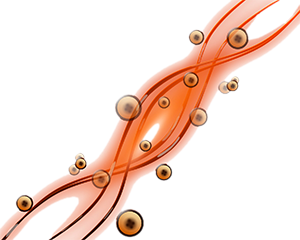THE PROBLEM
Although DNA sequencing allows the identification of bound library members, the count of an individual DNA code cannot be used to precisely determine the absolute binding affinity values. Therefore, conventional technologies, (e.g. enzyme inhibition, isothermal titration calorimetry, or fluorescence polarization assay) are typically used for the final characterization of the selected hit-compounds. Using these “low-throughput” methods to screen a satisfactory number of candidate compounds requires the re-synthesis of “off-DNA” binding compounds and constitutes the major bottleneck of DNA-encoded chemical library technology for drug discovery applications.
THE “REGENERABLE” SOLUTION
In 2015 the group of Dr. Zhang at B CUBE Dresden described a fast-regenerable chip-based automated high-throughput assay to overcome such limitation. Such approach relies on an unprecedented biosensor methodology that allows the simultaneous determination of affinity constants (KD) and kinetic parameters (kon and koff) of several hundreds of DNA-tagged compounds on the same biosensor chip without the need to re-synthesise and purify the “off-DNA” compounds.
THE METHOD
As schematically depicted in Figure 21, initially, the biosensor support is coated with a small oligonucleotide carrying a complementary sequence to a specific DNA-conjugate hit-compound (i,ii). After annealing the conjugate on the chip (iii), the target protein is injected at different concentrations to assess the binding affinity(iv). Eventually, the chip is regenerated washing off the DNA-conjugate hit using suitable regeneration conditions (iv to ii).
The loading and regeneration procedure can be repeated over many cycles (at least 20) without losing the signal intensity.

Figure 21: After coating the biosensor chip with a small oligonucleotide (i,ii), a complementary DNA-conjugate hit-compound is hybridised (iii) and the target protein injected at different concentrations to assess the binding affinity (iv). The chip is regenerated washing off the DNA-conjugate compound from the chip under regeneration conditions (iv to ii). Another DNA−ligand conjugate can then be immobilized on the regenerated chip, and its binding affinity to the same or a different protein evaluated.
The methodology was applied to the characterisation of Cyclosporin A (CsA) derivatives, revealing KD values of 6.67 ± 0.02 nM against cyclophilin A (CypA), in good agreement with literature values (KD = 8.8 ± 1 nM by ITC; Ki = 8.6 ± 1.1 nM by CypA inhibition assay).
As the designed double helix structure is very stable through many rounds of binding, dissociation, and chip-regeneration, the method has been elegantly and successfully implemented to determine the binding affinity of a ligand (CsA) toward different target proteins (RhTC, CypB, and Cyp40).
As highlighted by the authors, the method can be rapidly adapted to virtually any biosensor platforms (including QCM and SPR) available on the market.
FRAGMENT-BASED SCREENING APPLICATIONS
Given the compatibility of the approach with the high-throughput validation of both DNA-conjugate and self-assembled library, the Zhang et al. validation method currently represents the unique technology capable of rapidly screening fragment-based collections without the need to synthesize and purify the individual combinatorial compounds.
As shown in Figure 22, following coating of the biosensor support with a suitable oligonucleotide sequence (i,ii), a partially complementary double-stranded DNA displaying two ligands is hybridised (iii) and binding assay performed (iv). Once the measurement is completed, the chip is regenerated washing off the ligands using an opportune regeneration solution.

Figure 22: After coating the biosensor chip with a small oligonucleotide (i,ii), a partially complementary double-stranded DNA displaying two ligands is hybridised (iii) and the target protein injected at different concentrations to assess the binding affinity (iv). The chip is regenerated washing off the DNA-conjugate compound from the chip under suitable regeneration conditions (iv to ii). Another couple of DNA−ligands can then be immobilized on the regenerated chip, and binding affinity to the same or a different protein evaluated.
To demonstrate the suitability of the regenerative method to determine the affinity of fragment-based couples without the need of synthesising and purify the corresponding covalent conjugate, the binding of streptavidin with DNA-iminobiotin conjugates was investigated. Controlling the coating and thus the average distance among the conjugated molecules on the chip surface, it was possible to unambiguously distinguish the bidentate binding of a pair of bidentate ligands (KD = 5.7 ± 1.6 nM) from the effect of high surface density of the monomeric DNA-conjugate (KD = 147.4 ± 21.3 nM).
IN BRIEF
The biosensor-based hit validation method described by Zhang et al. represents a very elegant solution to rapidly(i.e., a few weeks) characterise by affinity measurement hundreds of DNA-endoded hits on a single chip in an almost completely automated high-throughput fashion with minimal human intervention. Furthermore, this method is platform-independent and can be readily adapted to validate the hits stemming out from other DECL-set up (i.e., self-assembled DNA-encoded chemical libraries) or to support the screening of fragment-based collections without the need of synthesizing and purify the individual combinatorial compounds.

